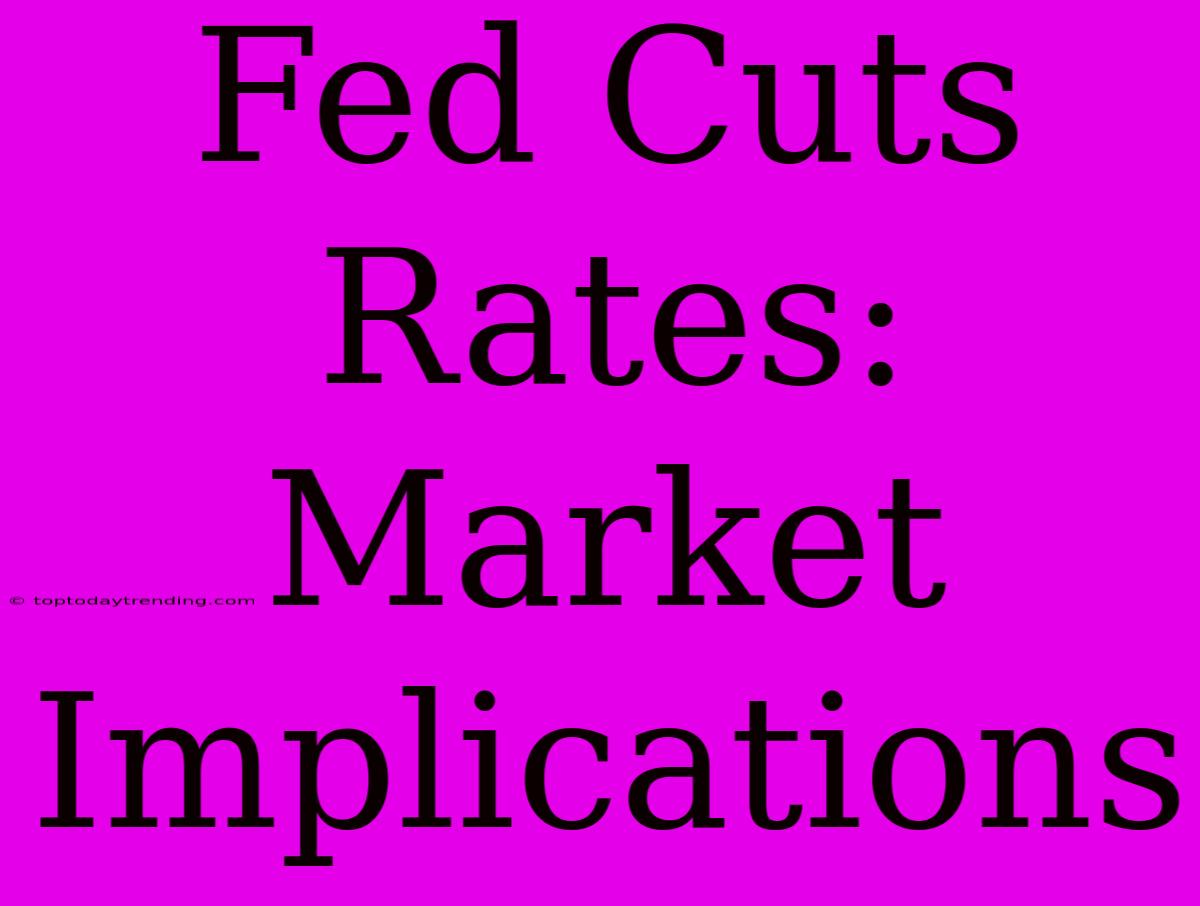Fed Cuts Rates: Market Implications
The Federal Reserve's decision to cut interest rates has significant implications for the financial markets. This move, designed to stimulate economic growth and combat inflation, can impact various aspects of the market, from stock prices to bond yields. Understanding these implications is crucial for investors and businesses alike.
What does a Fed rate cut mean?
The Federal Reserve (Fed) is the central bank of the United States, responsible for controlling the money supply and setting interest rates. When the Fed cuts interest rates, it essentially makes it cheaper for banks to borrow money from each other. This, in turn, encourages banks to lend more money to businesses and consumers, leading to increased economic activity.
Market Implications:
1. Stock Market:
- Potential for Growth: Lower interest rates can boost stock prices as businesses find it cheaper to borrow money and invest in growth. This can lead to higher profits and dividend payouts, attracting investors to the stock market.
- Increased Volatility: The uncertainty surrounding the economy and the Fed's future decisions can lead to market volatility. Investors may become cautious and adjust their portfolios based on their risk tolerance.
2. Bond Market:
- Lower Bond Yields: Bond yields tend to move inversely to interest rates. When the Fed cuts rates, bond yields typically fall, making bonds more attractive to investors seeking lower risk investments.
- Demand for Bonds: Lower yields can increase demand for bonds, driving prices up and further reducing yields.
3. Currency Market:
- Weaker Dollar: Lower interest rates can make the US dollar less attractive to foreign investors, leading to a weaker dollar. This can benefit exporters as their goods become cheaper in foreign markets, but can also lead to higher import costs.
4. Housing Market:
- Increased Demand: Lower interest rates make mortgages more affordable, potentially leading to increased demand for homes and a rise in home prices.
- Potential for Bubbles: However, this can also create a risk of housing bubbles forming, where prices rise rapidly and unsustainably.
5. Other Sectors:
- Consumer Spending: Lower rates can encourage consumers to spend more, as borrowing becomes cheaper. This can benefit businesses in consumer-facing sectors, like retail and services.
- Investment and Innovation: Businesses might be encouraged to invest more in expansion and innovation, boosting the economy.
Risks and Considerations:
- Inflation: While the Fed aims to stimulate growth, it needs to ensure that inflation doesn't rise too rapidly. If inflation becomes uncontrollable, it could undermine the benefits of lower interest rates.
- Debt Levels: Lower interest rates could encourage businesses and consumers to take on more debt, leading to increased financial risks.
- Economic Outlook: The effectiveness of rate cuts depends on the overall economic outlook and the root causes of any economic slowdown.
Conclusion:
The Fed's decision to cut rates can have a complex and multifaceted impact on the market. While it can stimulate growth and benefit various sectors, it also carries risks and uncertainties. Understanding these implications is vital for investors and businesses to make informed decisions and navigate the evolving market landscape.

